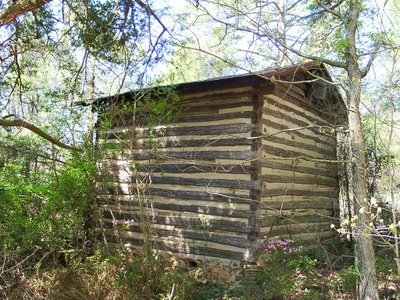Pfafftown, Part IV (Farming)
 William Vance Nichols' 1994 painting "The Harvest" captures a period in history. This scene was a common sight in Pfafftown. As with most rural areas of the country, agrarian life was the norm for most people, especially prior to the 1950's. The main crops around Pfafftown were tobacco, corn, various small grains, and grass for hay. Hogs, cows, chickens and large gardens were also farmed to help feed families.
William Vance Nichols' 1994 painting "The Harvest" captures a period in history. This scene was a common sight in Pfafftown. As with most rural areas of the country, agrarian life was the norm for most people, especially prior to the 1950's. The main crops around Pfafftown were tobacco, corn, various small grains, and grass for hay. Hogs, cows, chickens and large gardens were also farmed to help feed families.Tobacco harvesting meant going to the fields beginning in July to visit each plant. The ripening of tobacco leaves starts at the bottom of the stalk and moves up the plant over an 8 to 12 week period. These weekly visits involved "cropping" the ripe leaves usually 2 to 4 leaves per plant each week. These yellow-tinted, green leaves would make cracking sounds as the wrist-action of children and adult labor broke the leaves next to the stalk. This was back-aching work in conditions of extreme heat. "Priming" was the term used to describe the work of the "field hands" as they moved along the tobacco rows in stoop labor form.
The leaves were accumulated into sleds pulled by mules or small tractors passing through the fields. When full, the sleds were dragged to the barn where, usually female, crews would hand- string "bunched" leaves onto sticks. After the day's harvest was complete, the men would return to the barn and begin "housing" the loaded sticks onto "tier poles" inside the barn.
These barns were usually built from hand-hewn logs interlocked on the corners forming a square of around 16 feet. The courses of logs would rise to around 13 to 15 high and be around that many feet tall. A typical barn would hold 250 to 350 sticks loaded with leaves ready for curing. Curing meant slowly adding heat to the closed barn over the time span of 5 to 7 days. The ambient heat was produced by wood burning inside a rock or brick tunnel built inside the barn on the dirt floor. Oil and propane gas were introduced later to produce heat as conversions were made to modernize these barns. Temperatures would eventually be raised from 150 to 155 degrees Fahrenheit to dry the harvest and turn these leaves a bright golden color. The cured leaves were removed from the barn just in time for the cycle to repeat the next week.
As a teenager during summer, I worked all jobs associated with tobacco farming except curing. Although my father and mother didn't farm during my childhood, I worked as a hired hand for neighbors in the area. The going pay rate for this type work was $0.75 per hour during the time period of early '60's.
Today, these barns dot the Pfafftown countryside in an abandoned, dilapidated, or overgrown condition as two pictures show below. I'm not aware of any tobacco now growing in Pfafftown and can't recall when I last saw a field growing here. These old barns represent a past era that has been replaced with modern day living.
I'll describe the wildlife here in a couple days.
Have a good day!


Labels: Pfafftown


0 Comments:
Post a Comment
<< Home